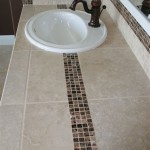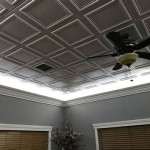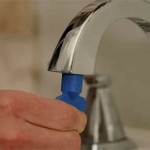Why Does My Bathroom Smell Like Sewage?
The presence of a sewage-like odor in a bathroom is a common, yet unpleasant, experience. This foul smell, often described as similar to rotten eggs or decaying organic matter, indicates a potential problem within the plumbing system. Identifying the source of this odor is crucial for maintaining a sanitary and healthy living environment. The sewage smell is not merely an annoyance; it can also be indicative of underlying issues that, if left unaddressed, could lead to more significant plumbing complications and potential health hazards.
The causes of sewage odors in bathrooms are multifaceted, ranging from simple, easily rectifiable issues to more complex problems that require professional intervention. Understanding these potential causes is the first step in diagnosing and resolving the issue. This understanding enables homeowners and building managers to proactively address the problem before it escalates into a more costly and disruptive situation.
Dry or Cracked Drain Traps
One of the most frequent culprits behind sewage smells in bathrooms is a dry or cracked drain trap. Drain traps, also known as P-traps, are curved sections of pipe located beneath sinks, showers, and tubs. Their primary function is to hold a small amount of water, creating a seal that prevents sewer gases from rising up through the drain and into the bathroom. When this water evaporates due to infrequent use or is compromised by a crack in the pipe, the seal is broken, allowing the noxious gases to escape. This is particularly common in guest bathrooms or infrequently used drains where the water in the P-trap has had time to evaporate.
The function of the drain trap is critical to maintaining a sanitary environment. Sewer gases contain a mixture of potentially harmful compounds, including methane, hydrogen sulfide, and ammonia. These gases not only contribute to the unpleasant odor but can also pose health risks if inhaled in high concentrations. Hydrogen sulfide, for instance, is responsible for the characteristic rotten egg smell and can be toxic at elevated levels.
Diagnosing a dry drain trap is relatively straightforward. If a bathroom has been unused for an extended period, and a sewage smell is present, the likely cause is an evaporated water seal. Similarly, if there is a visible crack or damage to the P-trap, the seal is compromised, regardless of water level. Rectifying a dry drain trap involves simply running water down the affected drain for a few minutes to refill the trap. For a cracked or damaged trap, replacement is necessary. This usually involves disconnecting the old trap, purchasing a new one of the correct size and material, and reconnecting it securely. Plumbers' putty can be used to ensure a watertight seal between the trap and the drain pipes.
Preventative measures can help to avoid dry drain traps. Periodically running water down infrequently used drains, even for just a few seconds, will maintain the water seal. Additionally, inspecting the P-traps regularly for signs of cracking or damage will allow for timely repairs, preventing the sewage smell from occurring in the first place.
Ventilation Problems in the Plumbing System
The plumbing system relies on a network of vent pipes to function properly. These vents extend from the drain pipes to the exterior of the building, typically through the roof. Their purpose is to regulate air pressure within the plumbing system, allowing wastewater to flow freely and preventing vacuums from forming that could siphon water from the drain traps. When these vent pipes become blocked or damaged, the plumbing system is unable to properly ventilate, leading to pressure imbalances and the potential for sewer gases to be forced back into the bathroom through the drains.
Blockages in vent pipes can occur due to various reasons. Debris such as leaves, twigs, bird nests, and even small animals can accumulate in the vent opening on the roof, obstructing the airflow. In colder climates, ice can form inside the vent pipe, particularly during periods of freezing and thawing, creating a temporary blockage. Damage to the vent pipe, such as cracks or breaks caused by weather or physical impact, can also compromise its functionality.
Identifying a ventilation problem can be more challenging than diagnosing a dry drain trap. Common signs include gurgling sounds from the drains after flushing a toilet or running water, slow draining sinks or tubs, and the presence of sewage odors that seem to come and go intermittently. These symptoms suggest that the plumbing system is struggling to maintain proper airflow, leading to pressure fluctuations that allow sewer gases to escape.
Addressing ventilation problems often requires professional assistance. To inspect and clear vent pipes, it is usually necessary to access the roof, which can be dangerous and requires specialized equipment and knowledge. Plumbers have the tools and expertise to safely remove blockages, repair or replace damaged vent pipes, and ensure that the plumbing system is adequately ventilated. In some cases, it may be necessary to install additional vents to improve airflow and prevent future problems.
Regular maintenance can help to prevent ventilation issues. Periodically inspecting the vent openings on the roof for signs of debris accumulation and clearing any obstructions can prevent blockages from forming. In areas prone to freezing temperatures, consider insulating the vent pipes to minimize the risk of ice formation. Promptly addressing any signs of damage to the vent pipes will prevent further deterioration and maintain the integrity of the plumbing system.
Sewer Line Issues
Problems with the sewer line, which is the main pipe that carries wastewater away from a building to the municipal sewer system or a septic tank, can also contribute to sewage odors in the bathroom. These issues can range from minor blockages to more severe problems such as cracks, leaks, or collapses in the sewer line. When the sewer line is compromised, wastewater can leak into the surrounding soil, creating a breeding ground for bacteria that produce foul-smelling gases. These gases can then seep into the building through cracks in the foundation or through the plumbing system.
Common causes of sewer line problems include tree root intrusion, which occurs when tree roots grow into the sewer line in search of water; the accumulation of grease, hair, and other debris that can clog the pipe; and the wear and tear of the pipe over time, leading to cracks and leaks. In older buildings, sewer lines made of materials such as clay or cast iron are particularly susceptible to damage and deterioration.
Identifying sewer line issues can be challenging, as the symptoms can be subtle and may mimic other plumbing problems. Common signs include frequent backups in toilets or drains, slow draining sinks or tubs, the presence of sewage odors that are persistent and do not seem to be related to dry drain traps or ventilation problems, and unusually lush patches of grass in the yard, which may indicate a leak in the sewer line that is fertilizing the soil.
Addressing sewer line problems typically requires professional intervention. Plumbers have the tools and expertise to diagnose the problem using methods such as video camera inspection, which involves inserting a small camera into the sewer line to visually assess its condition. Once the problem is identified, plumbers can recommend the appropriate solution, which may include clearing blockages, repairing cracks or leaks, or replacing the entire sewer line.
Preventative measures can help to minimize the risk of sewer line problems. Avoid flushing grease, hair, and other debris down the toilet or drains. Consider using drain screens to catch hair and other particles. Have the sewer line inspected periodically, particularly in older buildings or in areas with mature trees near the sewer line. If tree root intrusion is a recurring problem, consider using root-killing chemicals or installing a root barrier around the sewer line.
Wax Ring Failure on Toilet
The wax ring, positioned between the base of the toilet and the flange that connects it to the drainpipe, creates a watertight seal. This seal prevents water and sewage from leaking out onto the bathroom floor and, importantly, stops sewer gases from escaping into the room. Over time, the wax ring can degrade, dry out, or become damaged, compromising the seal and allowing sewage odors to permeate the bathroom. Factors contributing to wax ring failure include the age of the ring, movement of the toilet due to loose bolts or unstable flooring, and improper installation during the initial toilet setup.
Identifying a failing wax ring often involves noticing specific signs. One of the most telling indicators is the presence of water around the base of the toilet, particularly after flushing. This moisture suggests that the seal is no longer watertight and water is escaping. A less obvious, but equally important, sign is a persistent sewage odor emanating from the toilet area, even when there is no visible water leakage. A wobbly or unstable toilet can also point to a compromised wax ring, as movement can break the seal.
Replacing a wax ring is a manageable DIY project for those with basic plumbing skills, but it's crucial to proceed carefully to ensure a proper seal. The process involves shutting off the water supply to the toilet, disconnecting the water supply line, removing the bolts securing the toilet to the floor, and carefully lifting the toilet off the flange. The old wax ring should be discarded, and the flange should be thoroughly cleaned of any residual wax or debris. A new wax ring is then placed on the flange, ensuring it's properly aligned. The toilet is then carefully placed back onto the flange, and the bolts are tightened evenly to compress the new wax ring and create a watertight seal. Finally, the water supply line is reconnected, and the water supply is turned back on. Inspecting for leaks after flushing is crucial to ensure the new wax ring is functioning correctly.
To prevent premature wax ring failure, several measures can be taken. Ensure the toilet is securely fastened to the floor and doesn't rock or wobble. Periodically check the bolts holding the toilet in place and tighten them if necessary. When installing a new toilet, take care to properly align the wax ring and avoid over-tightening the bolts, which can damage the wax ring. Consider using a wax ring with a plastic or rubber sleeve for added durability and sealing power.
Biofilm Buildup in Drains
Biofilm is a slimy layer composed of bacteria, fungi, and other microorganisms that can accumulate on the inner surfaces of drainpipes. This buildup is particularly prevalent in drains that are frequently exposed to organic matter, such as food scraps, hair, and soap residue. As the biofilm grows, it decomposes the organic matter, producing foul-smelling gases that can escape through the drain and into the bathroom. The odor associated with biofilm is often described as musty, mildewy, or sewage-like, depending on the composition of the biofilm and the types of materials it is decomposing.
Identifying biofilm buildup as the source of a sewage smell can be challenging, as the odor may be intermittent and difficult to pinpoint. However, several clues can suggest the presence of biofilm. If the sewage smell is strongest near a particular drain, such as the sink or shower drain, and seems to intensify after running water, biofilm is a likely culprit. A visible slimy or discolored residue around the drain opening can also indicate biofilm buildup. Additionally, if the odor persists despite cleaning the bathroom and addressing other potential sources of sewage smells, biofilm should be considered.
Removing biofilm buildup typically involves cleaning the drainpipes with a solution that can kill the microorganisms and dissolve the organic matter. Several options are available, ranging from household remedies to commercial drain cleaners. A common homemade solution consists of baking soda and vinegar. Pouring a cup of baking soda down the drain, followed by a cup of vinegar, and allowing it to fizz for 30 minutes to an hour can help to dislodge and dissolve the biofilm. Flushing the drain with hot water afterward will rinse away the residue. Commercial drain cleaners specifically formulated to kill bacteria and break down organic matter can also be effective, but it's important to follow the manufacturer's instructions carefully and avoid using harsh chemicals that could damage the pipes.
Preventing biofilm buildup requires regular cleaning and maintenance of the drains. Flushing the drains with hot water after each use can help to rinse away organic matter and prevent it from accumulating. Periodically pouring a solution of baking soda and vinegar down the drains can help to keep the biofilm from forming. Avoid pouring grease, oil, or food scraps down the drain, as these materials provide a food source for the microorganisms and contribute to biofilm growth. Using drain screens to catch hair and other debris can also help to reduce the amount of organic matter that enters the drainpipes.

Why Does My Toilet Smell Like Sewage 5 Causes Solutions

Why Does Bathroom Smell Like Sewage Crystal Blue
What To Do When You Notice A Sewer Smell In Bathroom Spaces Howstuffworks

Why Does My Shower Drain Smell Bad Kay Plumbing Heating And Cooling

Sewer Smell In Bathroom Solved Bob Vila

Why Does My Toilet Smell Like Sewage 5 Causes Solutions

Sewer Smell In Bathroom Identify And Eliminate The Odor

Smells Like Sewage Here S Why Simpson Plumbing Llc

Why Is There A Bad Smell In My Bathroom M J Burt

What Causes Bathroom Drains To Smell
Related Posts







